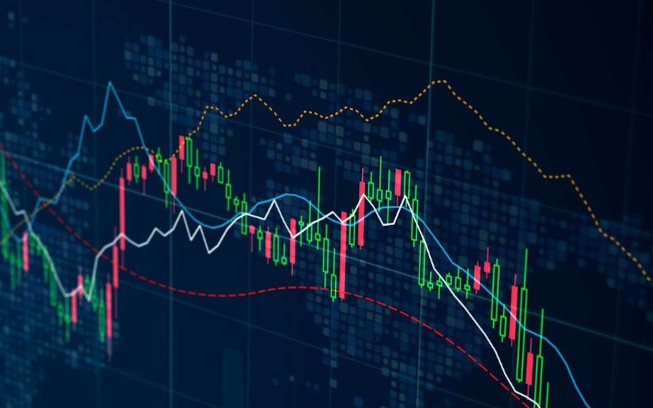
Forex trading has gained remarkable popularity over the years, attracting novice and seasoned traders alike. As part of this approach to trading, PAMM (Percentage Allocation Management Module) accounts have emerged as an appealing investment vehicle for those who wish to engage in the Forex market without doing the heavy lifting themselves. In this article, we will delve into the workings of Forex trading and PAMM accounts, highlighting their advantages, potential risks, and how to choose the right PAMM account for your investment goals. For those interested in exploring more options, you might want to check out forex trading pamm accounts Hong Kong Trading Platforms.
What is Forex Trading?
Forex trading, or foreign exchange trading, involves exchanging currencies in the global market. It is one of the largest and most liquid markets in the world, with a daily turnover exceeding $6 trillion. Traders engage in Forex trading to profit from the fluctuations in currency prices, aiming to buy low and sell high. Unlike traditional stock markets, which operate during specific hours, the Forex market operates 24 hours a day, five days a week, allowing for immense flexibility.
How Does Forex Trading Work?
The Forex market comprises currency pairs, such as EUR/USD (Euro/US Dollar) or GBP/JPY (British Pound/Japanese Yen). When you trade a currency pair, you are essentially betting on the value of one currency relative to another. If you believe that the Euro will strengthen against the US Dollar, you would buy the EUR/USD pair.
In Forex trading, there are key concepts that traders must understand:
- Leverage: This refers to the ability to control a larger position with a smaller amount of capital. While leverage can amplify profits, it can also magnify losses, making it a double-edged sword.
- Pips: The smallest price move that a given exchange rate can make based on market convention. Typically, one pip is equal to 0.0001 for most currency pairs.
- Margin: This is the amount of capital required to open a leveraged position. Understanding margin is crucial for effective risk management.
What Are PAMM Accounts?

PAMM accounts are an investment solution designed for those who want to invest in Forex but lack the time, knowledge, or expertise to trade independently. A PAMM account is managed by a professional trader, allowing investors to allocate their capital to the trader’s account and benefit from their trading experience.
The various components of PAMM accounts include:
- Trader: The individual or company who manages the PAMM account and is responsible for making trading decisions.
- Investors: Individuals who allocate funds to the PAMM account. They share in the profits generated by the trader based on the amount they have invested.
- Broker: The financial institution that facilitates the trading process and maintains the PAMM account.
How PAMM Accounts Work
When an investor selects a PAMM account, they deposit funds into that account, which the trader then manages. The profits generated are distributed according to the investors’ share of the total investment. For example, if an investor contributes 10% of the total capital in a PAMM account, they would receive 10% of the profits or losses generated.
Benefits of PAMM Accounts
PAMM accounts offer several advantages:
- Expert Management: Investors benefit from the knowledge and expertise of professional traders, who may have years of experience in Forex trading.
- Hands-Off Approach: Investors do not need to dedicate time to manage their investments actively, ideal for those with busy schedules.
- Diversification: Investors can allocate funds to multiple PAMM accounts, spreading their risk across different strategies and traders.
- Transparency: Most PAMM accounts provide investors with real-time data on performance, allowing them to monitor their investments closely.
Risks Involved in PAMM Accounts
While PAMM accounts can be advantageous, they are not without risks:
- Dependence on Trader’s Performance: Investors’ success is tied to the trader’s abilities. Poor trading decisions can lead to significant losses.
- Lack of Control: Investors cannot intervene in trading decisions, which can be frustrating, especially in turbulent market conditions.
- Broker Risks: The safety of investments also relies on the broker’s reliability. Using a reputable broker is crucial to mitigate this risk.
Choosing the Right PAMM Account
When considering a PAMM account investment, several factors should be taken into account:
- Performance History: Review the trader’s historical performance. Look for consistent returns and examine both the profits and losses over time.
- Risk Management Strategy: Understand the trader’s risk management approach. A responsible trader will have a clearly defined strategy in place.
- Minimum Investment Requirements: Different PAMM accounts may have varying minimum investment thresholds. Make sure it aligns with your investment capacity.
- Fees and Commissions: Understand the fee structure of the PAMM account. Some may charge performance fees, while others may have management fees.
Conclusion
PAMM accounts present a unique opportunity for individuals interested in Forex trading without the need for extensive market knowledge or time commitment. By leveraging the expertise of professional traders and diversifying investments, investors can potentially access significant returns. However, it is essential to weigh the risks involved, conduct thorough research, and choose a reputable trader and broker. With the right approach, PAMM accounts can be a valuable asset in your investment portfolio.
